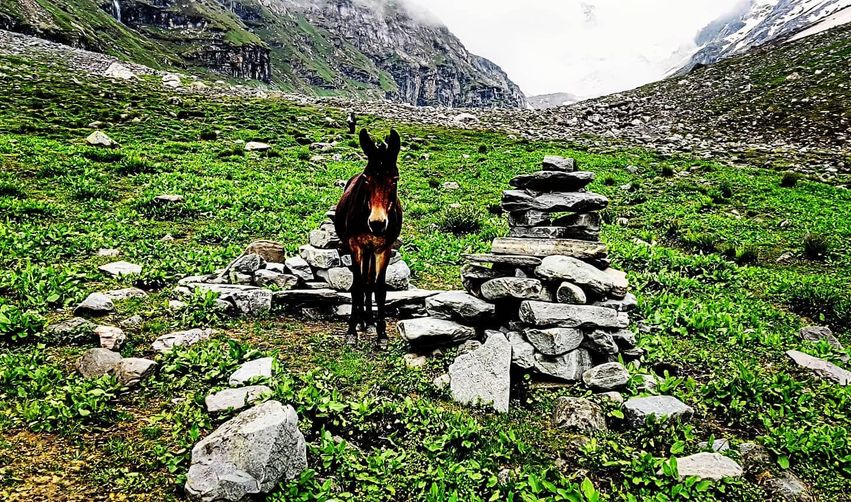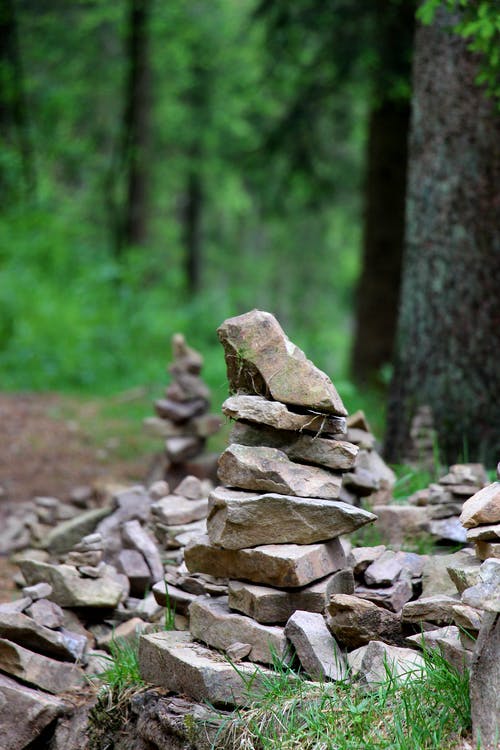
Ever came across stacked rocks while trekking on hills or exploring the wilderness? Wonder what do they signify?
“We call these cairns and they are found in mountains all over the world, either to mark a route or a summit.”
“They are made by people who have passed those trails …to mark the trail for others.”
“I even saw them in Iceland !!! Must be some ancient totem thingy.”s
“It’s also a type of meditative thing… requiring focus and concentration.”
“Perhaps the very human trait to build something.”
“Yeah, I have seen them on Australian shores too! Beautiful balancing on one another. This was a patch on the Noosa beach full of all lined up stacked stones!!”
“They turn up in national parks, balance on graveyard tombstones, and heaped at the feet of statues at religious sites.”
Support and Safe Passage

Stacked rocks, commonly known as ‘cairns’ or ‘carn’, might appear to be a humble art organized by kids, but these are actually a purposeful part of the inhabitants’ and trekkers’ lives. These are often placed along the trail signifying that you are on the right track, especially in cases where navigation becomes difficult. Cairns were used since the beginning of civilization, mostly so that the inhabitants did not get lost in nature.
Although there are ample hi-tech GPS gadgets available to the hikers, campers, cyclists and rock climbers, almost all travellers have at least, at some point of time, relied on trails and paths to guide them in the right direction or help them track their whereabouts.
Marking Places of Importance

In Highland folklore it is recounted that before Highland clans fought in a battle, each man would place a stone in a pile. Those who survived the battle returned and removed a stone from the pile. The stones that remained were built into a cairn to honour the dead.
Native Americans and others on hills use stacks of rocks to mark water, food sources, and land boundaries. They are also used to indicate important places, landmarks such as hunting or a resource location. Stone mounts were sometimes created on burial sites as well.
Spiritual Grounding

In Hinduism, stones and stone carved idols are sacred. Buddhists too believe that rocks and stones are forces of nature, worshiping which leads to attainment of balance in life. In certain cultures, stones are certainly a vehicle for prayers. An inhabitant of a hill town shared a local belief that “whoever does this, would own a house soon”.
Neha, a teacher and an ardent reader expresses that each stone in the stone stack represents a particular wish of the stacker. “It is believed that stacking the stones brings good fortune to the stacker and her/his family.” Each stone represents a particular wish and possibly, a family member. Some also believe that you should stack stones in a spiritual place where you probably may never go back, as an expression that “you were there”.
Mahesh, a highly spiritual and aware personality, rounds up the discussion saying “the Buddhists have a knack of getting these things right. Stacking of stones is incidental, the coordination, balance and concentration needed to control the mind and body is the intended outcome”.
David B. Williams, who wrote the book Cairns: Messengers in Stone explains that the desire to stack rocks is understandable from a practical, aesthetic, and spiritual perspective. “We have been building these things for thousands of years. They’re a way to say: I am here. I have lived.”
The Flip Side
Lately, rock stacking has become a popular activity among tourists. It gives people some sort of innate satisfaction to stack rocks and stones, in all shapes, colours, and sizes. However, the environmentalists have a different take at this newfound hobby of humans. These unnatural piles and stacks are a ‘bad idea’ as

- The misplaces stacks of rocks can lead the hikers off trail. Many depend on sanctioned cairns for navigation in places without clear trails. It has become difficult to determine which rock piles are legitimate and which ones are made by other hikers just for fun.
- If the stones are pried loose for cairn-making, it can promote erosion.
- Endanger fragile ecosystems – animal, flora; disrupt river flow. Many insects and mammals escape under rocks to live, reproduce, or hide from their predators. Moving a rock might mean destroying a home and exposing the prey to their hunters.
I am not sure how many people construct cairns for allowing safe passage to the other travellers! In my humble opinion, making piles of rocks amidst wilderness and rough terrain can be a decent pastime – relaxing and allowing much required fidgeting at times, unless you dig the stones out. If the piles are made of free rocks, they won’t harm the environment; in fact, leave something for posterity, reminding of a common objective and challenge. People become one in purpose even if they haven’t crossed paths.
Mountain trails are difficult, these little memorials remind travellers of humans and humanity. Let them be! Piled up rocks are a profound symbol of hope, perseverance, and triumph!
A part of content and a few images have been taken from the wall of Tushar Maheshwari who has recently trekked Hampta Pass.
Monica (Managing Editor) is the quintessential researcher - she thrives on showcasing overlooked aspects that form the foundation blocks of people, places and issues. She is a social scientist by profession with masters in Economics and loves to travel.